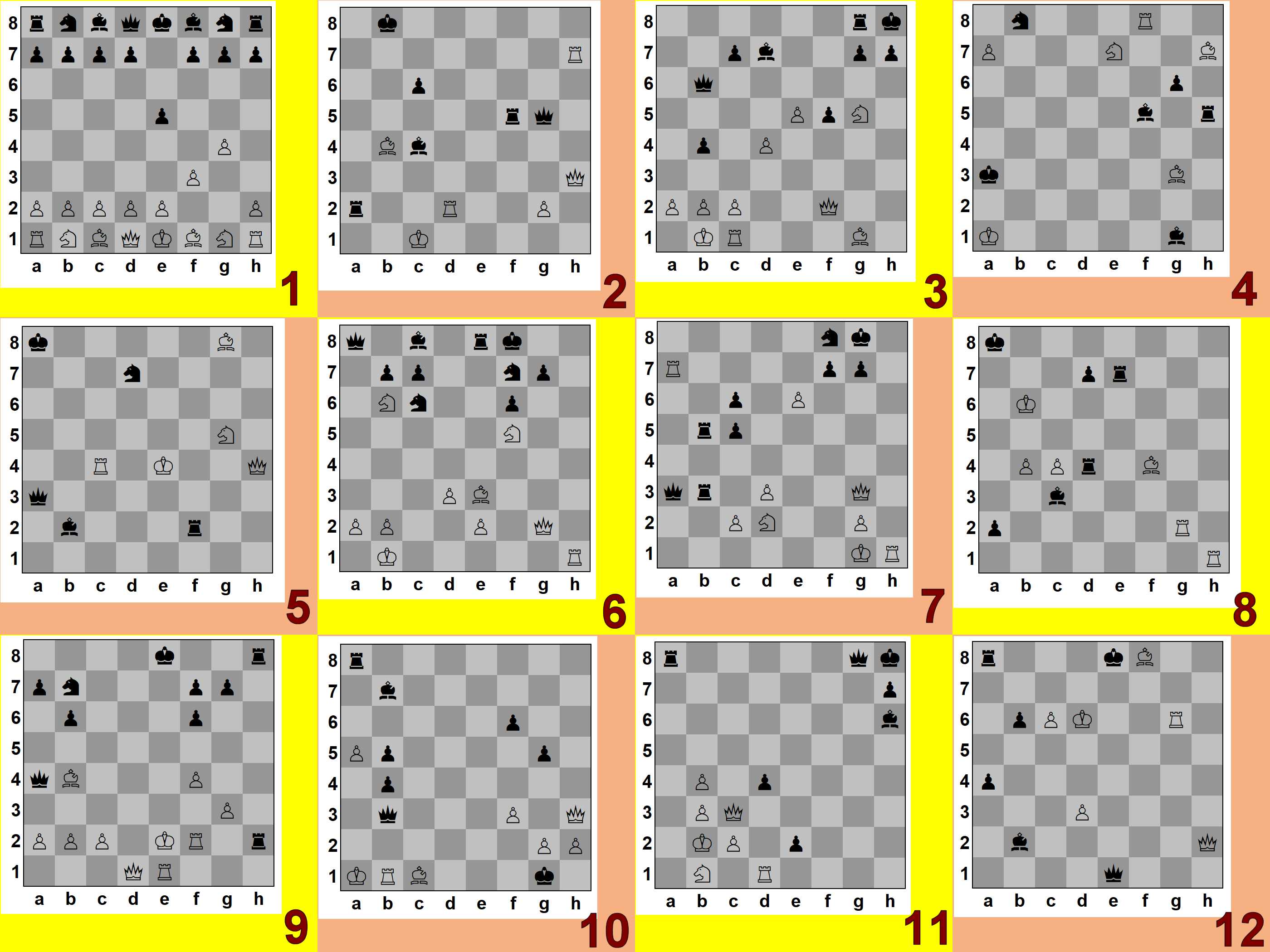
Mate, Mate! Trivia Quiz
Checkmates in One Move
In this quiz, we'll be looking at the easiest possible chess problems - "Mate in one move". Each black and white piece type can move and deliver mate in exactly one position. Who MOVES to deliver mate in each case? Some positions are slightly tricky!
A label quiz
by WesleyCrusher.
Estimated time: 3 mins.
- Home
- »
- Quizzes
- »
- Hobbies Trivia
- »
- Board Games
- »
- Chess
